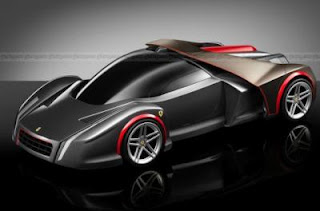
This week and next Nissan is hosting a small group of lucky auto writers to get a look first-hand at the North American-spec 2009 Nissan GT-R. The location is a small area within Reno called Incline Village. Its there that it all begins. After a technology presentation by GT-R Product Manager Peter Bedrosian, I walk out to meet my driving partner. He is already at the wheel of our 2009 Silverstone Metallic GT-R. Sucks to be me.
Chambers presses the ignition button and we're off. The car almost sounds like it's supercharged and not turbocharged. Part of that sound is the whirl of the transmission, but even at about 25 miles per hour I can hear the humming of the turbos as the tach continues its rise towards the 7,000 redline.
We're headed to Reno-Fernley Raceway located about 90 miles from the city. For this first portion, my driving partner takes it about as easy as an 80-year old granny on the GT-R, never breaking more than 50mph, 4,000 rpm, also never putting any of the optional settings (located in the center stalk) on R Mode and leaving the vehicle in Automatic mode. The adrenaline is pumping (Note: sarcasm).
Almost 50 miles into the drive it's finally my turn to drive the GT-R. After over an hour of what felt like cruise control on winding stretches of road that should have been exciting at the hands of my driving partner, I need to feel how fast the Nissan can take off. Or maybe I compelled to show my partner what being in a GT-R means.
Whatever the reason, we buckle up and I tell him, "I think you might want to hold on." My foot hits the floor like I'm trying to kill a four-inch long, winged cockroach and the GT-R's 3.8L engine begins to spin exponentially, sending the tach successfully to the redline over and over again. The smile on my face is matched by the look of shock and intense fear on my partner's face that distinctly reads, "I'm about .1g from soiling my pants!"
The acceleration is unbelievable and will slap a smile on any driver's face even at partial throttle. How can a 4,000 lb showroom stock street car pull us back into the seats like a ballistic missile? 480 horsepower, that's how. After the sensation of blasting from 0 to 100mph has worn off slightly we can really begin to see what else the GT-R can do. The back roads from Reno to the track are a good opportunity as any to see how well the car can handle; most of the two-lane road is composed of heavy banked left and right turns with the occasional straight to get up to fourth or fifth gear.
Three cars are available for the track driving, with Steve Millen behind the wheel of a red GT-R for hot laps around the track. I'm confident that anyone from a guy who has never tracked a car to a regular track driver will both jump into the car see how manageable the GT-R really is.
You will drive faster from the moment you can feel how assured the chassis, acceleration, overall grip and braking all work in accord. If ever there was a car that can read minds, this is it. I drove the track with little to no fear of going off-course or making a mistake. The car is that good. The car does everything Nissan says it'll do; more importantly, the GT-R will do everything you want it to do.

































